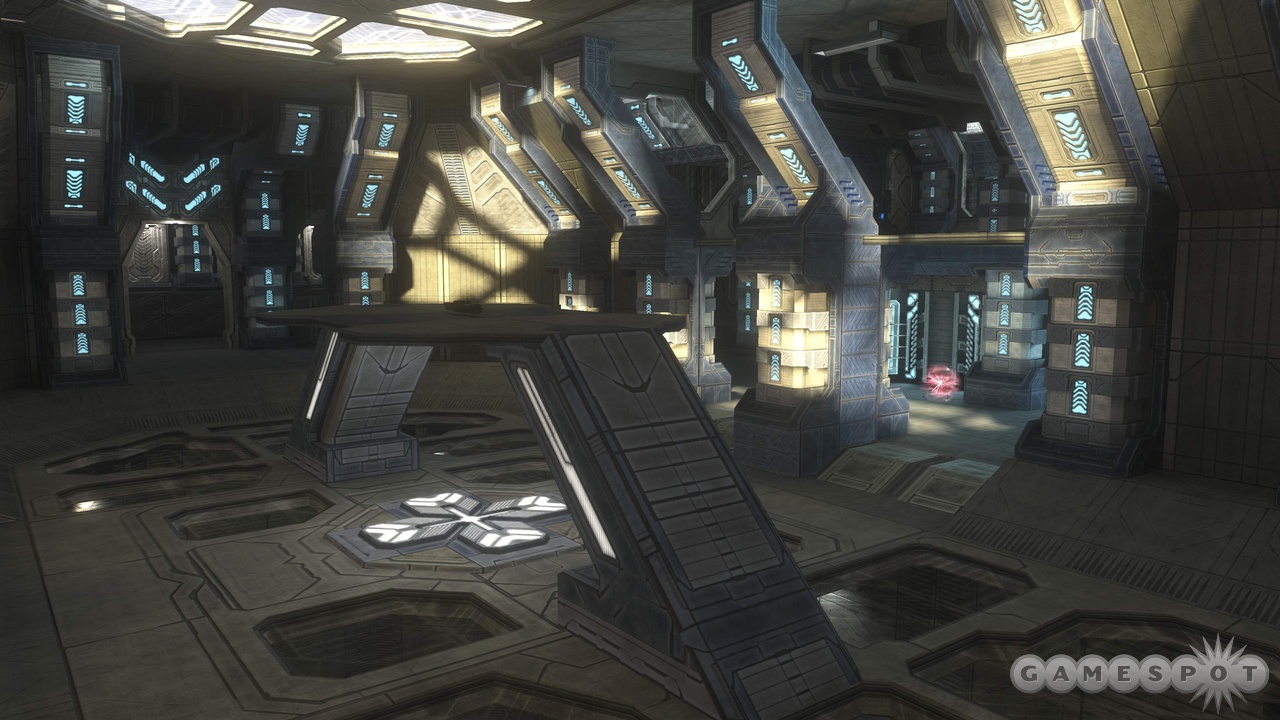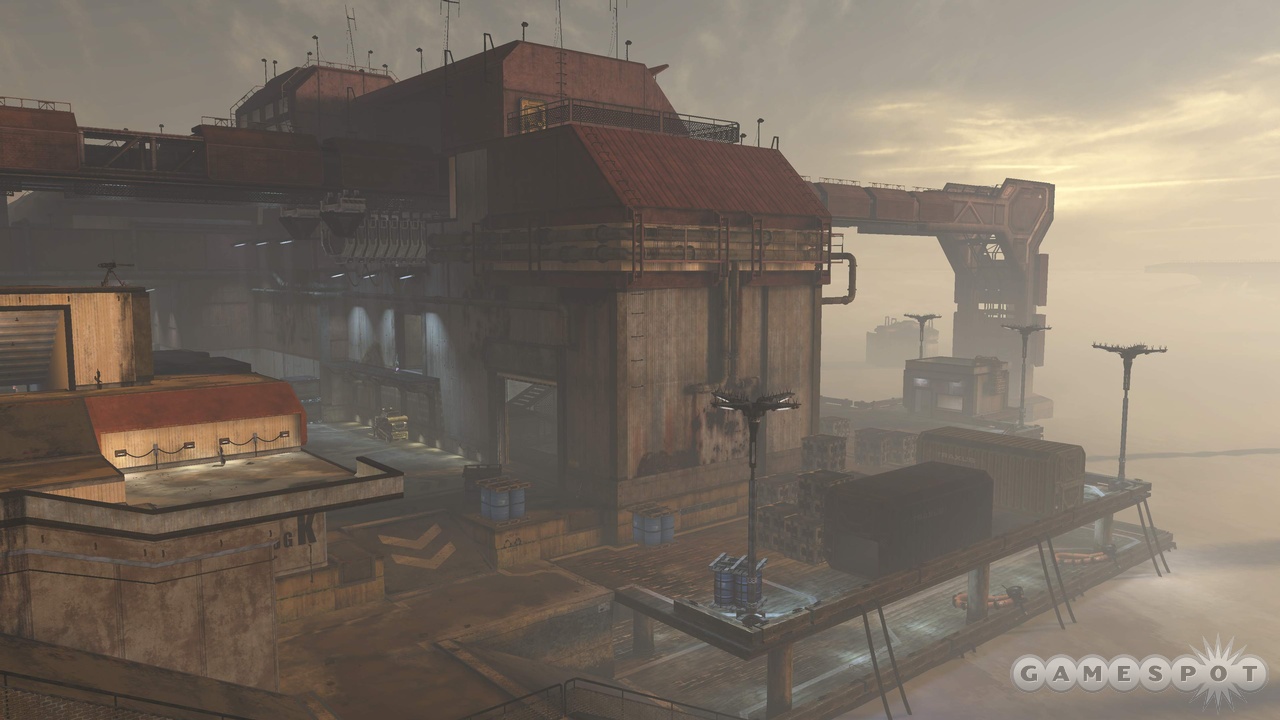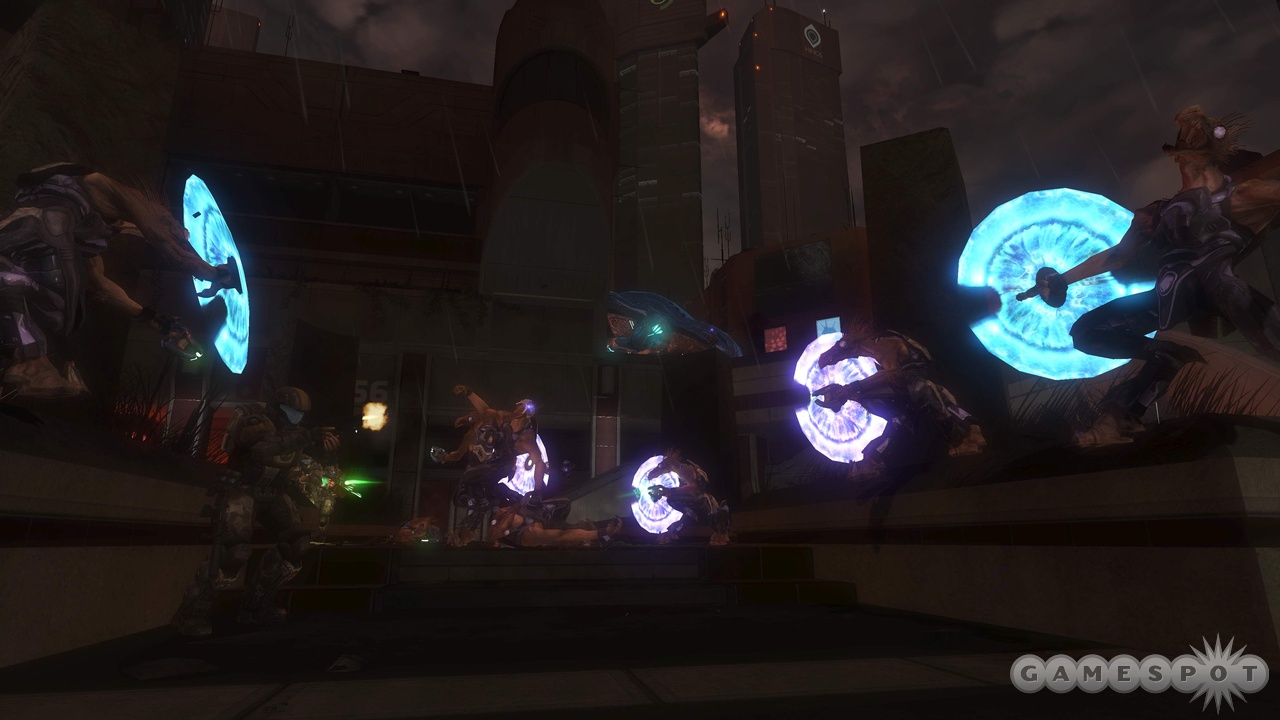Halo 3: ODST Updated Hands-On - Multiplayer and Firefight
We check out the new Halo 3 multiplayer maps exclusive to ODST owners and then hunker down against waves of the Covenant in a new Firefight map.
As Microsoft and Bungie release more information on Halo 3: ODST, it’s become clear that this upcoming shooter is neither a sequel nor an expansion. Rather, it’s a combination of new and familiar that doesn’t fit very neatly into either definition. You’ll find a new cooperative mode called Firefight and a full-fledged single-player campaign that dives into unexplored territory from Halo 3’s storyline, but the competitive multiplayer component is both identical to and compatible with its predecessor Halo 3. However, one major piece that pushes ODST deeper into “all-new” territory is the inclusion of three exclusive multiplayer maps that regular old Halo 3 players won’t be able to download anytime soon. We traveled to Bungie this week to get a hands-on run through all three of these maps and to take a quick look at a brand-new setting in the Firefight mode.
The Complete FALLOUT Timeline Explained! Warhammer 40k: Darktide - Path of Redemption | Update Trailer SAND LAND - Official Darude Sandstorm Trailer Is Fallout 76 Good in 2024? No Rest for the Wicked - Official Steam Early Access Launch Trailer Battlefield 2042 | Frontlines Mode Returns - Time-Limited Event Trailer 21 Details You May Have Missed In Helldivers 2 Stellar Blade - Official "The Journey" Behind The Scenes Trailer | PS5 Games Zenless Zone Zero - Official Koleda Character Teaser Trailer | "Bite At The Site" PUBG MOBILE | SPYxFAMILY Collaboration LIVE Now! Genshin Impact | Version 4.6 "Two Worlds Aflame, the Crimson Night Fades" Trailer The 11 Creepiest Vaults Of Fallout
Please enter your date of birth to view this video
By clicking 'enter', you agree to GameSpot's
Terms of Use and Privacy Policy
First, here's a primer for those unfamiliar with ODST’s unique packaging. The aforementioned campaign and Firefight modes will come on one disc, while the competitive multiplayer comes on a separate disc within the same box. It’s the same exact Halo 3 multiplayer fans have been playing for nearly two years now, but with every downloadable map pack ever released for the game on the disc. And, of course, there’s also the trio of exclusive maps known as Heretic, Citadel, and Longshore.
We’ll start with Heretic. This one is the resident re-creation of the bunch because it’s closely based on Midship from Halo 2. Midship, as you’ll recall, is a smallish, circular map with a wide-open space in the middle and a number of sprawling ramps leading up to perches that flank the outside walls. Bungie reps were quick to note that it’s a much more faithful re-imagining than the update from Lockout to Blackout. They described it as being not quite “pixel perfect,” but close enough that all those strategies from the second game will still work here. The inclusion of Halo 3 equipment, such as the bubble shield, adds a new layer of gameplay though, as anyone who’s trying to hold the middle area during a game of King of the Hill while plasma grenades rain down from every direction can attest.
Next on the list is Citadel. According to Bungie, the inspiration for this map comes directly from the studio’s voracious fan base. The Halo 3 community has been clamoring for a small, symmetrical arena-style map for quite some time now, and Citadel is designed to be just that. It’s somewhat of an oval-shaped map inspired from a citadel environment from the Halo 3 campaign, with a fairly open space in the middle and continuous paths around the outside that include both a ground level and second level. It’s a very straightforward map that keeps the focus directly on the players and the action while keeping things fast and frantic. In Oddball, picking up the skull is akin to asking for instant death because there’s nowhere to hide, but in multi-Capture the Flag, there’s enough space between sides that you can score somewhat easily but still keep good enough sightlines on the enemy to play solid defense.

The third and largest of these maps is Longshore. It’s a marked departure from the other maps, with an asymmetrical layout and dynamic elements not unlike a map along the lines of Zanzibar. Longshore is set on a rusty shipping facility on the docks of New Mombasa and takes place under a hazy early morning or late afternoon sun. All over the place are touches that add to that industrial feeling, with such scenery as forklifts, dinghies, and fake logos for a humorous seafood company called “Fronk’s” plastered all over the walls. This map definitely has the most real-world feel of the three locales. In fact, you can practically smell the sea while playing it.
Longshore is a map that seems best suited for one-flag Capture-the-Flag matches, with an attacking team base, a defending team base, and a large storage facility in between housing such things as shipping crates and a freezer room. The defending team has its work cut out for it with a number of entrance routes to the flag at the top of its building. There’s a wide ramp way off to the side that offers attackers a direct route but little cover; a series of narrow ramps running through the inside of the building that promote intense, close-quarters combat; and a sky bridge that extends from the neutral area in the middle right on top of the flag that can be unlocked when the attacking team switches on a console deep inside the defending team’s base. The latter route changes the battle dramatically, as the defending team suddenly has to deal with attackers coming from below and above. By default, Longshore also comes with a Ghost vehicle, but it’s more useful as a weapon for running over enemies than as a means of transportation because there aren’t any long stretches.
In addition to checking out the new multiplayer maps, we spent some time with the Firefight mode. If you've read our previous impressions of Firefight, you'll know that it's a Halo-themed take on a recently popular co-op mode in games where a small team of survivors are holed up in one location while wave after wave of increasingly powerful enemies come rushing in after them. You've seen similar modes in Left 4 Dead and Gears of War 2, and that's something Bungie reps were perfectly willing to admit. They were quick to point out that the basics of Firefight are nothing new, but it is new to Halo, and Bungie has taken care to put its own distinct stamp on the experience.

One big difference in Firefight is the inclusion of skulls, or game-affecting power-ups, that enhance the power of your enemies to add an extra layer of difficulty as you progress deeper into the waves. The first skull is called "tough luck" and gives your enemies an adept ability to dodge from your grenades; the second is "catch" and causes enemies to hurl grenades at you far more than they often would; and the third is "black eye," which only lets you replenish stamina when you melee attack an enemy, rather than have it replenish on its own as usual. If you make it through an entire set (which is made of three rounds of five waves each), you can unlock a bonus round, which turns on every single skull in the game and lets you try to survive for 60 seconds in order to add to your overall points total. Sadly, we only lasted a few seconds in the bonus round--those skulls make the game awfully tough.
We've previously talked about the Security Zone and Alpha Site maps for Firefight, but this time, we got to play in a new area called Crater (Night). As the title suggests, this map takes place under a nighttime sky in an urban locale from ODST's single-player campaign. You and your squad start on the top of a large stairway, with another set on the other side of the map and a large, low courtyard in the middle that gives the map its craterlike feel. The nighttime setting gives you a good chance to use the visor mode, which is a secondary vision activated with the X button that brightens your screen and adds a color-specific outlines over enemies and friendlies. On the daytime map, visor mode simply washes out your screen and renders everything far too bright to see (a bit like staring at the sun), but here, it proves an invaluable tool for registering distant enemies cloaked in darkness.

All in all, the Firefight mode was a lot of fun. It strikes a great balance between the familiar brand of fast-paced Halo action and a few fresh elements. These include the option to play as non-Spartan characters who are both more fallible in battle and more prone to trash-talking; new weaponry, such as the silenced submachine gun; and the new strategies that come with staying put in one spot rather than charging across an entire level. You can expect to see ODST released on September 22.
Got a news tip or want to contact us directly? Email news@gamespot.com
Join the conversation